EVM LSD Stack
Smart contracts
The core part of StaFi EVM LSD Stack is a set of smart contracts, which are divided into two parts: PlatformContract, a platform contract managed by 61 Lab, and ProjectContracts, which belong to different projects. Platform contracts are common dependencies for all projects. Via platform contracts, developers or start-up projects can easily deploy and initialize their contract groups,distribute staking rewards.
Core contracts:
- LsdToken: an ERC-20 compatible derived token. Users receive this token when depositing target chain NST(abbr for Native Staking Token) to StakeManager and burn it when unstaking.
- StakePool: do delegation stuff with selected validators
- StakeManager: keep track of pools' states, interact with users, other routine works
Core roles:
- Owner: manages the whole network

User Stake Flow
StakeManager contract provides stake method for users to participate in staking. Different staking system has different ways to stake, such as BNB use native token as a staking token; MATIC use ERC-20 compatible token. We'll explore them one by one. Here is the formula for calculating the amount of LsdToken they will get.
amountLsdToken = LsdTokenTotalSupply / TotalNetworkBalanceOfUsers * amountStakingToken
Scenario 1: Staking token is a Native Token
Native token can be sent with method calling, so users can invoke stake method accompanied with the amount of token they're willing to stake, and they will receive equivalent LsdToken in return.
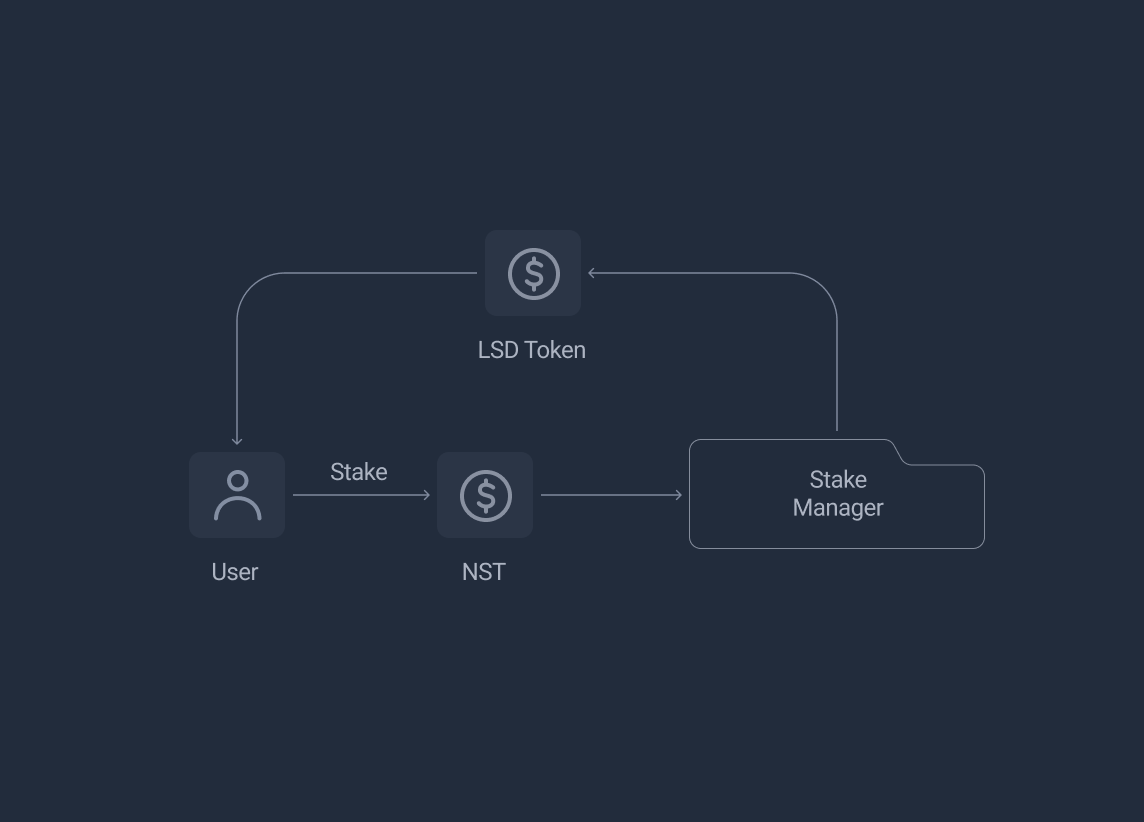
Scenario 2: Staking token is an ERC-20 compatible token
As staking token is an ERC-20 compatible token, users should approve StakeManager to spend their tokens, then they can stake it and receive equivalent LsdToken in return.
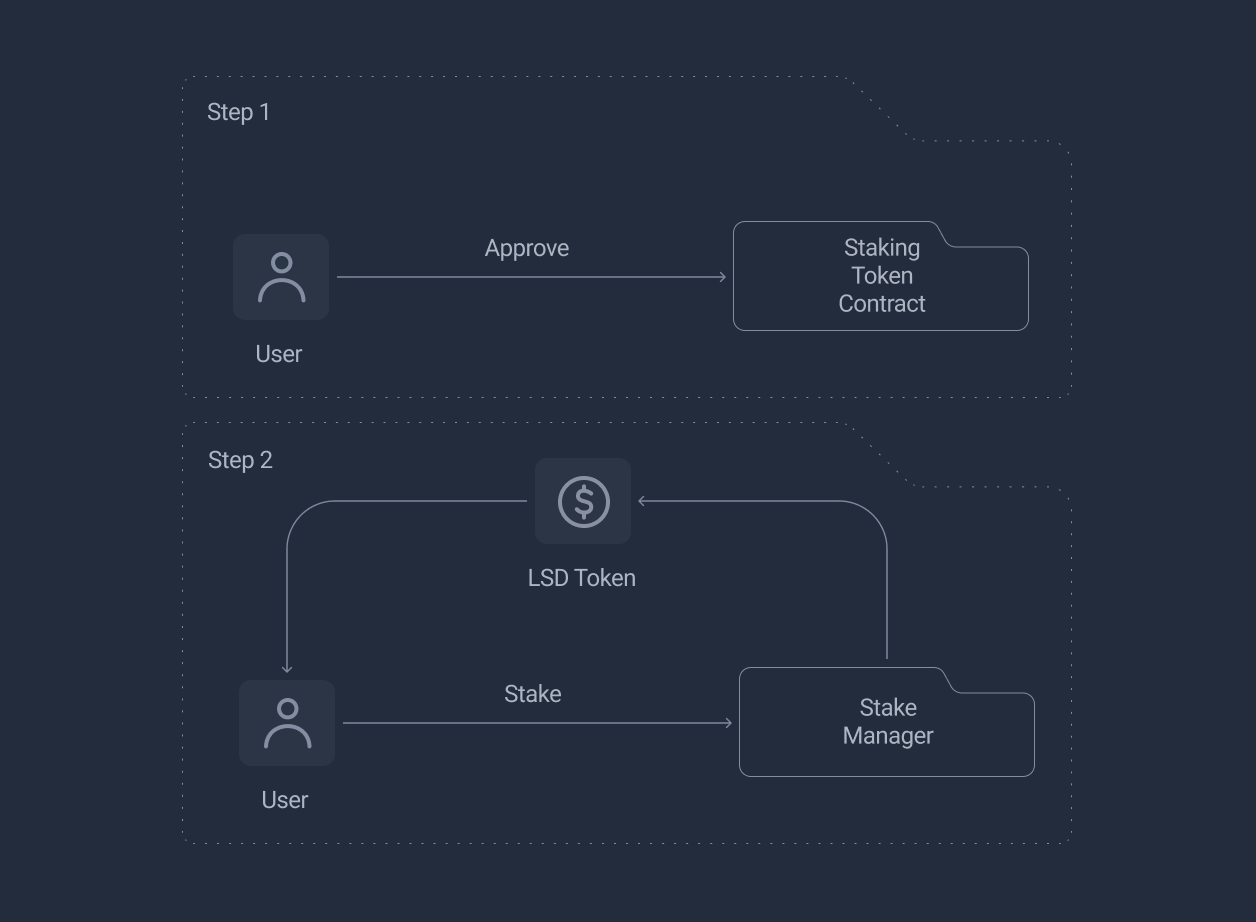
User Unstake Flow
Any LsdToken holder is a valid user, and can unstake tokens. At first, users should approve StakeManager to spend their token, then call StakeManager.unstake method to burn their LsdToken.
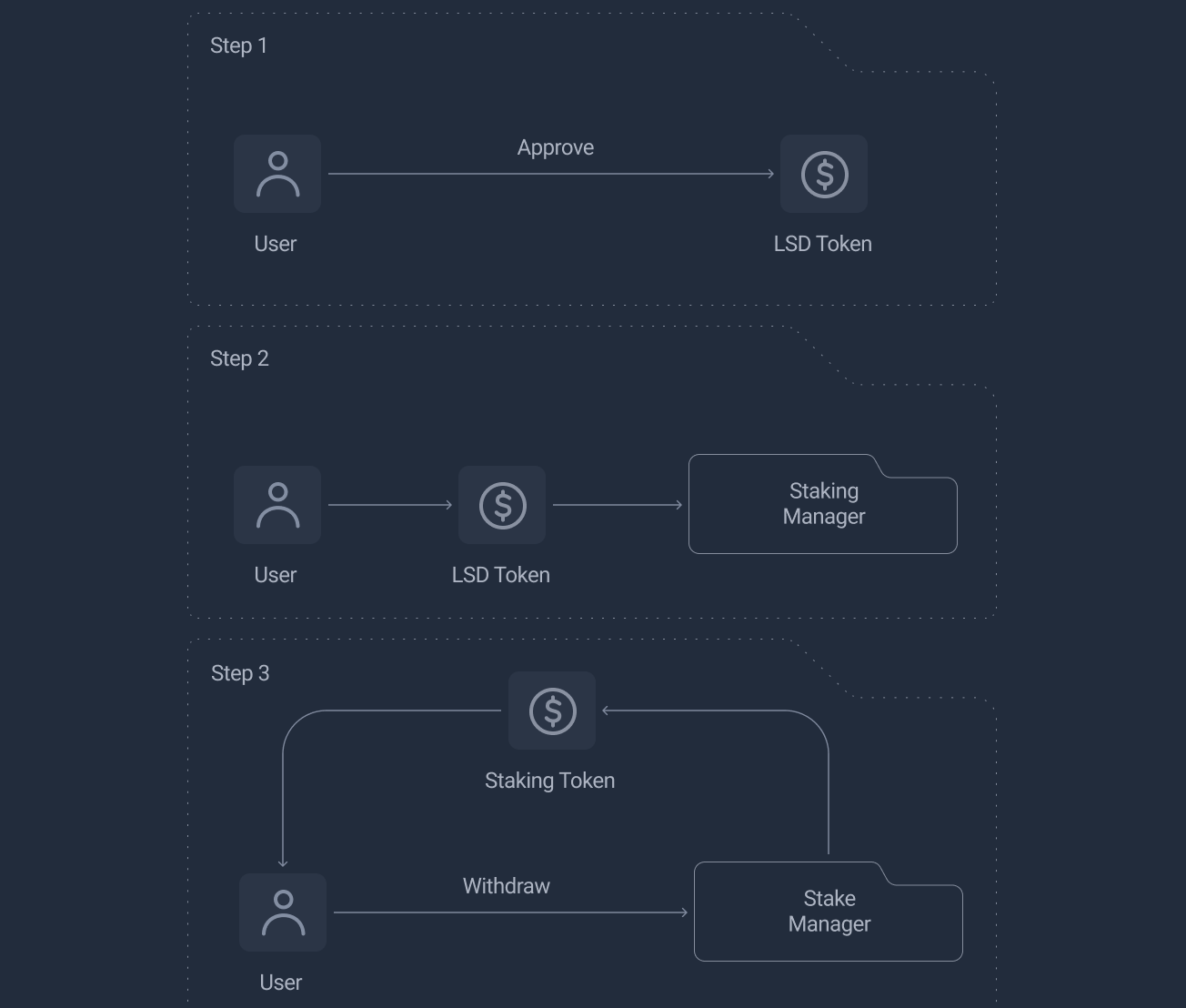
User Withdraw Flow
After unbonding period, users can get their rewards by calling StakeManager.withdraw method.

Balance Staking Pools
The default balancer is the project administrator, it is able to transfer to another account. The owner of StakeManager should create a new StakePool contract when one staking pool reaches its staking maximum threshold, and then balancer route users' staking assets to different stake pools to keep the network in a health(well-balanced) status.
Relay Service
Due to the limitation of smart contract, it could not launch an execution. So StaFi LSD Stack introduces Relay service, at a certain interval, it triggers StakeManager to collect, calculate users' staking reward, and distribute it to the project and users.
Here is an illustration of how Polygon relay works:
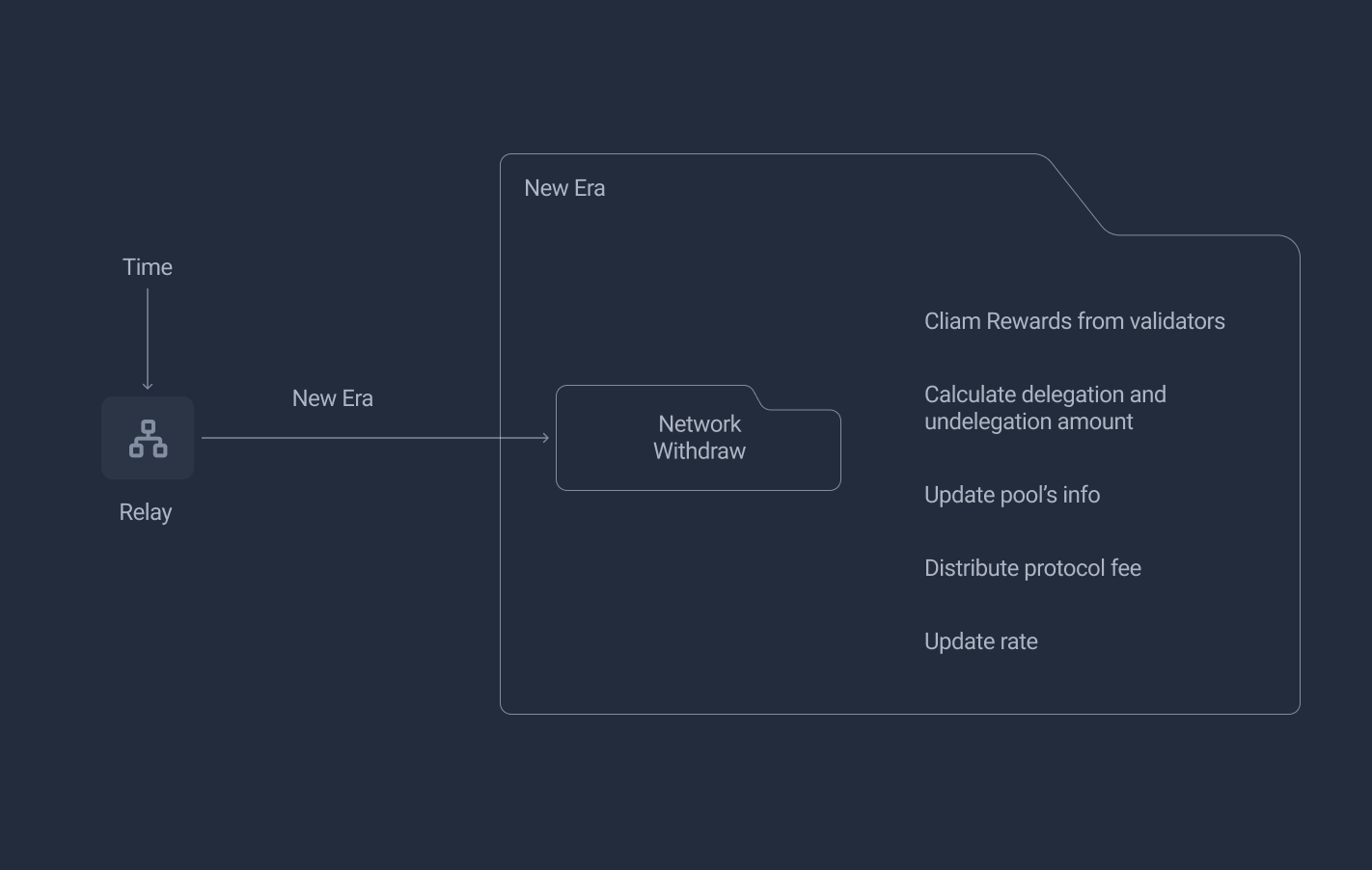
Validator Selector
Under normal circumstances, the validator is determined by the project administrator, but the project owner can also choose the advanced service, ValidatorSelector, which selects the optimal validator according to the validator selection algorithm developed by 61 Lab.
Quick Duplicate
StaFi EVM LSD Stack provides mature LSD solutions including contracts, back-end services for popular blockchains like BSC, Polygon, etc. However, for starting blockchain or layer 2 programs, the Stack also provides LSD interfaces. A limited work developers should do is to wrap only one or two contracts or provide several blockchain RPC APIs according to the Stack interfaces.
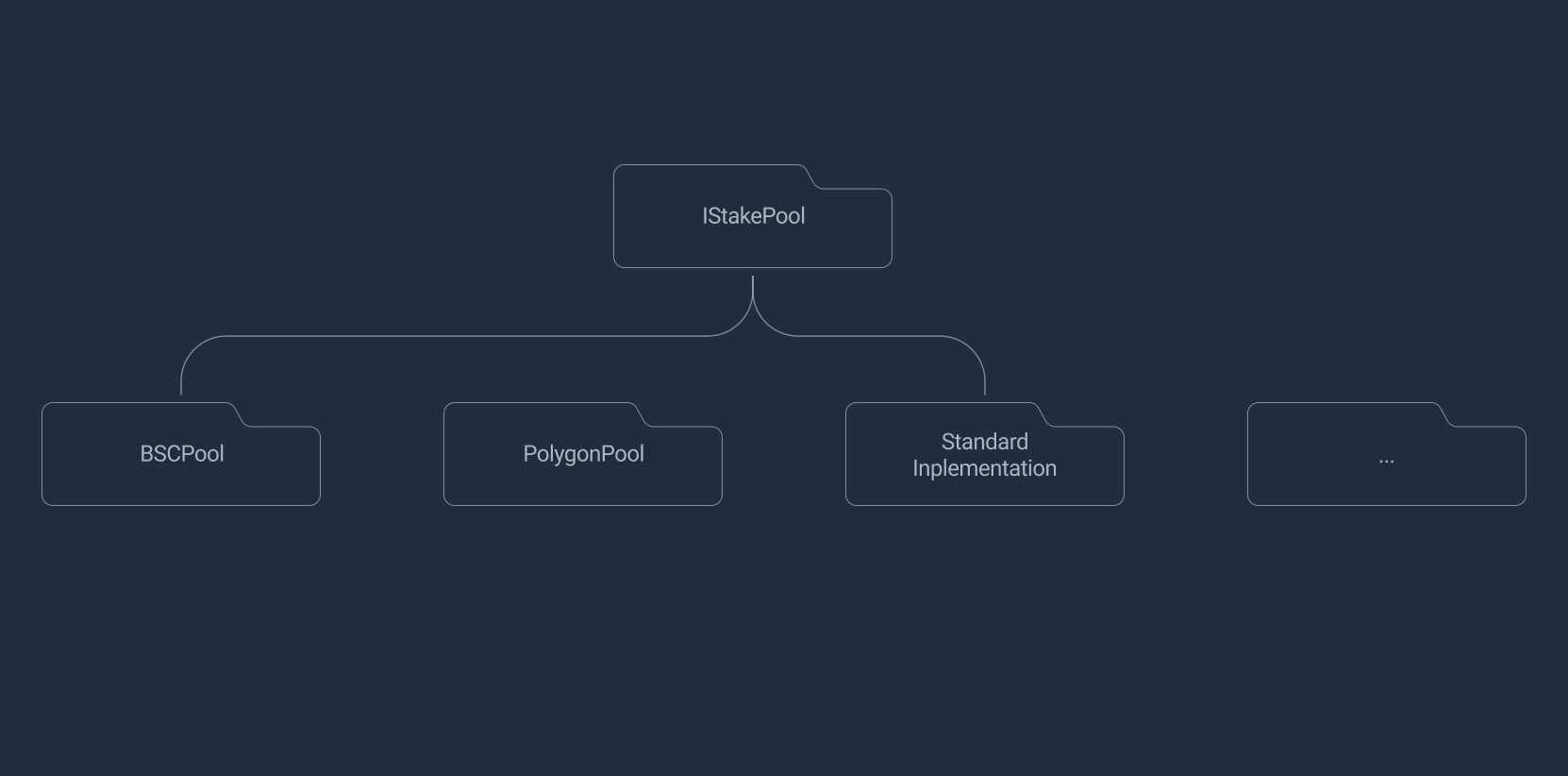
Alert
The LSD Monitor off-chain program monitors the flow of large amounts of governance token receipt and large amounts LsdToken minting and burning on the chain with notifications via email, SMS, phone, etc.
Circuit Break & Blacklist
Add a global settings contract. When emergencies occur, the administrator or a multiple signature account with administrative authority can add some addresses to the blacklist, restrict or disable certain accounts, or even stop the whole LSD. This part is too sensitive, dangerous, centralized, and increases user concerns. 61 Lab strongly recommended not to customize this function.
 StaFi LSD Stack
StaFi LSD Stack